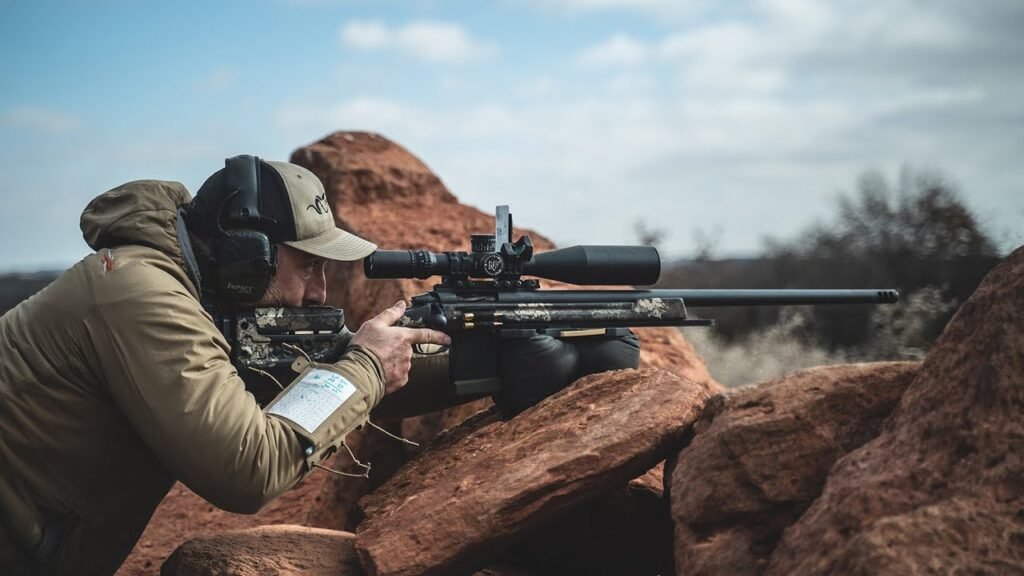Most people think long-range shooting is all about having sharp vision and a steady hand. That’s part of it, sure, but the reality is way more complex than that. The shooters who consistently hit targets at 500, 800, or even 1,000 yards aren’t just blessed with eagle eyes—they’ve developed a whole skillset that most casual shooters never think about.
The difference between punching paper at 100 yards and making precise shots at extended distances isn’t just a matter of scale. Everything that barely matters at close range suddenly becomes critical. Wind that wouldn’t budge a bullet at shorter distances can push it several feet off target. Temperature changes affect your ammunition’s performance. Even the rotation of the Earth starts to matter at extreme distances, though most hunting and target shooting situations won’t push things that far.
The Equipment Foundation Actually Matters
Here’s the thing about long-range work: mediocre equipment will hold back even skilled shooters. That doesn’t mean dropping five grand on a custom setup, but it does mean being thoughtful about what the rifle, optic, and ammunition can actually deliver.
The platform itself needs to be consistent. A quality bolt action rifle offers the inherent accuracy and repeatability that long-range shooting demands, which is why serious precision shooters gravitate toward them. The action cycles the same way every time, the lockup is solid, and there’s less that can go wrong between shots. But owning the right equipment is just the starting point—what matters more is understanding how to use it properly.
Optics deserve serious attention too. A scope that’s fine for deer hunting at 200 yards might not have the magnification range, tracking reliability, or optical clarity needed for consistent long-range work. The turrets need to track precisely, meaning when the adjustment says it’s moving the point of impact by one quarter-inch at 100 yards, it actually does that. Cheap scopes often don’t track accurately, and shooters end up fighting their equipment instead of developing real skills.
Understanding What the Wind is Doing
Wind reading separates people who occasionally connect at distance from those who do it consistently. The problem is that wind rarely behaves simply. It’s not just blowing from one direction at one speed—it’s shifting, swirling, and changing velocity as it moves across terrain.
Experienced shooters learn to read mirage, watch vegetation at different distances, and pay attention to how they feel wind on their face and body. They’re building a picture of what’s happening between them and the target, then making educated guesses about how much their bullet will drift. This takes years to develop, and even then, wind calls remain partly educated guesswork.
The bullet doesn’t just get pushed by wind at the shooter’s position. What’s happening at 300 yards matters just as much, maybe more, since the bullet is slowing down and spending more time in the air where wind has more opportunity to affect it. A 10 mph crosswind hitting the bullet for the last third of its flight can matter more than a 15 mph wind for the first third.
Ballistics Knowledge Changes Everything
Shooters who understand their ammunition’s trajectory and behavior have a massive advantage over those who don’t. Every bullet follows a curved path—it starts rising above the line of sight, reaches a peak, then falls increasingly fast as it loses velocity. Knowing exactly where that bullet will be at every distance means making accurate adjustments instead of guessing.
Modern ballistic calculators make this easier than it used to be, but they only work if the data going in is accurate. That means knowing the actual muzzle velocity (which varies from what’s printed on the box), the ballistic coefficient of the bullet, and the environmental conditions. Temperature, altitude, and humidity all affect how air density impacts the bullet’s flight.
But get this—shooters also need to verify their data. A ballistic calculator might say the bullet drops 80 inches at 600 yards, but if the real-world result is 85 inches, then the calculator’s numbers don’t matter. Good long-range shooters shoot at known distances and record actual results, building what’s called a DOPE card (Data On Previous Engagements) that reflects reality rather than theory.
The Physical Skills Nobody Sees
Position, breathing, and trigger control matter exponentially more at distance. Small inconsistencies that barely affect accuracy at 100 yards can cause complete misses at 600. The fundamentals that instructors hammer into beginners aren’t just basic skills to move past—they’re the foundation everything else builds on.
Body position needs to be stable and repeatable. Most long-range shooting happens from prone with some kind of support, but even then, there are better and worse ways to do it. The rifle needs to settle into natural point of aim, meaning when the shooter relaxes, the crosshairs stay on target without muscling the rifle around. Fighting the rifle creates inconsistency.
Trigger control becomes more critical because the sight picture is magnified. At 20x magnification, every tiny movement gets amplified. Jerking the trigger, even slightly, can throw shots off by several inches at long range. The trigger press needs to be smooth and straight back, happening almost as a surprise even though the shooter knows it’s coming.
Mental Game and Patience
Long-range shooting teaches patience whether shooters want to learn it or not. Rushing leads to mistakes—reading wind wrong, forgetting to adjust for distance, breaking a shot when position wasn’t quite settled. The shooters who consistently perform well are the ones who take their time and work through their process methodically.
There’s also a significant mental component to calling shots. Good shooters know where their crosshairs were when the trigger broke, which lets them predict where the bullet should impact before seeing the result. When the impact doesn’t match the call, that’s information—either the wind changed, the shooter made a mistake, or something else happened. This feedback loop is how skills improve.
Making a long-range shot successfully once doesn’t mean much. Making ten in a row from different positions, in different wind conditions, at different times of day—that’s what separates people who got lucky from people who’ve built genuine proficiency.
Building Skills Takes Time
Nobody becomes a skilled long-range shooter overnight. It takes hundreds or thousands of rounds, careful attention to what works and what doesn’t, and willingness to acknowledge mistakes instead of blaming equipment or conditions. The learning curve never really ends, either. Even experienced shooters continue refining their skills and learning new techniques.
Starting with realistic distances helps. Trying to shoot at 1,000 yards before mastering 300 or 400 usually just builds bad habits and frustration. Progressive distances let shooters build on success and understand how different factors come into play as range increases.
The shooters who develop real long-range capability treat it as a craft worth studying rather than a casual hobby. They keep records, analyze their performance, seek out instruction, and put in consistent practice time. Good eyes help, certainly, but vision is just one small piece of a much larger puzzle.

